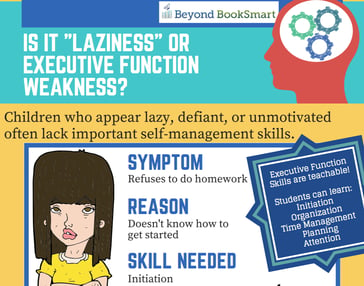We’ve all had that surge of nervous energy as a big event is coming up and learning to  control the jitters, or emotionally regulate, can be a challenge for both students and adults. As the start of the school year approaches, you might notice anxiety building as your child anticipates new teachers, a new schedule, and the other big changes. Let’s explore some ABCs of reducing anxiety from a coaching perspective that can help smooth out the bumps during these transition times for students.
control the jitters, or emotionally regulate, can be a challenge for both students and adults. As the start of the school year approaches, you might notice anxiety building as your child anticipates new teachers, a new schedule, and the other big changes. Let’s explore some ABCs of reducing anxiety from a coaching perspective that can help smooth out the bumps during these transition times for students.
A for Anticipate
When you expect something, you can often respond more clearly because you’re prepared. Yet the foresight needed for anticipating those challenges is an Executive Function skill - and not one that comes automatically for many children. A conversation with your child about the start of the school year can help normalize anxiety. Lots of students do not like to admit they might feel anxious (it seems so uncool to be nervous!). You might even notice your child putting on bit of bravado or over-confidence as a way to mask the anxiety, even from themselves. Letting students know that it’s normal to feel a little fearful about changes can help them gain self-knowledge and be more willing to try strategies to keep anxiety in check. Consider making a worry list with your child and then brainstorm possible solutions and strategies in order to feel prepared for school to start.
Here's an example of a worry list:
| I worry about... | What I can do |
| Forgetting my locker combination |
Write it with Sharpie pen on an inside pocket of my backpack and in my notebooks Practice making a song out of the numbers so I won’t forget it Find out who to ask at school if I forget it |
| Getting lost in the new school |
Take a tour before school starts Draw my own map or get help to draw one Ask a teacher for directions Find a buddy who has the same schedule |
B for Befriend
When young people start to learn about their own experience of anxiety, they gain insight into the workings of their minds and bodies. Anxious feelings often go along with an uptick in energy. Help your child to frame the extra energy as a way their body tells them to be ready for something important - but too much of that energy can work against them and make them feel overwhelmed instead of prepared for challenges. Students can actually learn to “befriend” the anxiety in order to manage it. A little bit of stress or tension keeps us alert and motivated. It’s like a good friend or study buddy to have around. When there’s too much of those anxious feelings, it can be helpful to pause for a short walk, a brief meditation, or some deep breathing. As coaches, we love apps like Calm.com and Headspace to help our students ease the intensity of anxiety and help them to dread it less.
C for Confidence
Students who feel anxious often lack confidence. While we can’t give a child confidence, we can set the stage for its growth by using positive reinforcement, maintaining developmentally appropriate expectations, and taking time to reflect on moments when your child has worked hard at overcoming a challenge or obstacle. As coaches, when we reflect with a student, we aim to help them identify the tools and strategies that they have discovered to be useful for them. They gain confidence because they see how effective they can be with the right methods in place. When we give our students positive reinforcement, we do it in a way that focuses on the effort they exerted and the process they used.
To build confidence, try the following:
| Instead of saying | Try this |
| You’re so smart! | You spent a couple days preparing for that test. It looks like your work paid off! |
| Don’t forget your backpack! | What strategy will you use to remember your backpack? |
| You did a great job on that project. | Why do you think you did so well? What did you do to make sure your project was done on time? |
Other people can be our best resources, so finding adults that students feel they can connect with at school or in an educational environment can help provide more models for healthfully dealing with stressors in life. We can model for children how to choose people who reinforce the belief that they are extremely capable.
Back to school anxiety is as normal as the annual trip to buy notebooks, pens, and a lunchbox. Strategies to anticipate challenges, befriend anxiety, and build confidence can go a long way toward turning down the worry and gearing up for a good year ahead.
photo credit: Shutterstock
Please see this page for comprehensive information about Executive Function in Elementary students.
Did you know that children who appear lazy or unmotivated often lack self-management skills? Download our new infographic featuring 5 common symptoms of Executive Function weakness.


